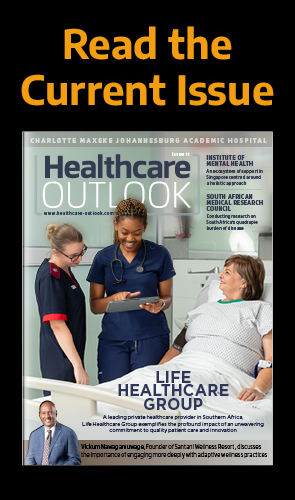Charlotte Lewis, Principle Associate – Commercial Health at Mills & Reeve, discusses the current FemHealth landscape and why perception towards women’s health must be reframed to become embedded across the wider healthcare landscape.
WHY REFRAMING WOMEN’S HEALTH IS VITAL
Prolonged waiting times, rising maternal mortality rates, persistent and unacceptable inequalities, and systemic underinvestment in women’s health – the evidence of a widening gender health gap is mounting and the need to address such disparities has never been greater.
The latest statistics tell the same story. Women spend an average of nine years in poor health – 25 percent more time than men. According to the NHS Confederation, gynaecological-related absenteeism alone costs the UK £11 billion a year, with menopause-related workforce exits costing UK public limited companies £1.5 billion.
By addressing such health inequalities it could boost the global economy by £1 trillion by 2034; the figures are substantial. Greater investment in women’s health will not only deliver better outcomes, but major socioeconomic benefits.
After all, women make up 51 percent of the UK population, undertake 68 percent of all unpaid caring roles in society, and are responsible for 80 percent of all household health decisions.
“Optimising their health is far from being a niche concern – it is a national imperative,” explains Dame Lesley Regan DBE in Mills & Reeve’s recent report Femhealth Focus – Current Realities and Future Horizons. The Women’s Health Ambassador for the Department of Health and Social Care is unequivocal in her stance. “Every girl and woman, at each stage of her life-course, deserves swift access to high-quality, compassionate, evidence-based healthcare.”
Regan is not alone in her desire to close the gender health gap and build a system that works for all women. Clinicians, scientists, entrepreneurs, funders, policymakers, charities, and advocates are all aligned in their view that we need to create a future where women’s health is no longer overlooked, but championed as a cornerstone of a fairer and healthier society.
REFRAMING WOMEN’S HEALTH
The consensus is clear – women’s health must be reframed not as a subset of reproductive care, but as the broader ‘health of women’. As one advocate strongly states, there’s so much more to being a woman than your womb and ovaries.
However, there remains a stigma attached to women’s health – one that not only impacts investment opportunities but also leads to a deprioritisation in health budgets and services, as well as creating a void in education. Whilst it’s a sad reality, documenting and proving the health gap is a positive step towards closing it and there is a growing cohort of FemHealth founders and innovators who are striving for change.
This is reflected in a women’s health market that is now estimated to have a global value of USD$48.2 billion. Although currently largely concentrated in the US, Europe is quickly catching up.
In 2024, the period tracking app Flo became the first European FemTech business to achieve unicorn status, demonstrating the significant market potential in innovative, tech-enabled solutions aimed at addressing the unmet needs of a large proportion of the population.

BREAKING DOWN BARRIERS
Collectively, women – and men – are seizing the opportunity to ensure that women’s health is fully embedded across every level of policy, commissioning, and delivery.
Recent initiatives signal a growing commitment to systemic reform. The NHS 10-year plan, for example, promises to prioritise women’s health through community-based care, digital innovation, and a renewed focus on prevention, with positive developments in cervical screening and maternity care aimed at improving results.
Whilst the 10-year plan lays some important groundwork, making the bold commitment of women’s health ‘never again being ignored’, there are many who believe it is a missed opportunity and falls short on real commitment.
The Royal College of Obstetricians and Gynaecologists (RCOG) has called for the Women’s Health Strategy for England to be “re-set quickly to work alongside the 10-year plan in driving improvements in women’s health access, experiences, and outcomes”.
As Professor Ranee Thakar, RCOG President, puts it, “it’s time for an NHS with all women at its heart.”
With that sentiment in mind, it’s imperative that we amplify women’s voices, listen to them, invest in research and clinical services that reflect women’s needs and lived experiences, and support the innovators who are driving change.
TECHNOLOGICAL CHANGE
As the NHS reforms in line with the policy direction set by the three shifts – care to the community, analogue to digital, and treatment to prevention – there is a material role for digital innovators.
Whilst concerns have been raised that the abolition of NHS England could delay or derail digital funding and IT programmes within the NHS, Secretary of State for Health and Social Care, Wes Streeting, has said the changes present new opportunities to build stronger partnerships with the life sciences and MedTech sectors.
Although digital technologies and artificial intelligence (AI) are no panacea, they have a central role to play in boosting NHS efficiency and driving much-needed change for women’s health.
Unsurprisingly, the global female HealthTech market is growing at an annual rate of 16 percent, but to date, the primary focus has been on menstrual health and maternity care. However, when you look at the whole gambit of women’s health issues there are huge parts of the landscape that are completely undeveloped, presenting significant opportunities for innovation and change.
A significant player in supporting this innovation is the NHS itself. Whilst the weight of bureaucracy and segregated budgets makes it a difficult breeding ground for early-stage growth, the institution is crucial for women’s health innovators, with access to a large, diverse patient population and a workforce representing the ideal setting for piloting innovations.
The key is unlocking that potential whilst tackling the larger issues of fragmented NHS commissioning structures, siloed services, and the way women’s health is conceptualised.
FUTURE HORIZONS
There’s no denying the gender health gap exists. However, despite facing barriers such as a lack of funding, gender bias, and societal disparities, businesses focused on women’s health are slowly making inroads – delivering cutting-edge healthcare innovation that is transforming women’s health and wellness, with technology playing a pivotal role in addressing inequalities.
The commitment, strength, and creativity of founders and pioneers are opening doors to new possibilities and advancements, unlocking unprecedented opportunities for growth and impact in women’s health. It’s a long road, but it’s one an increasing number are committed to following.

























